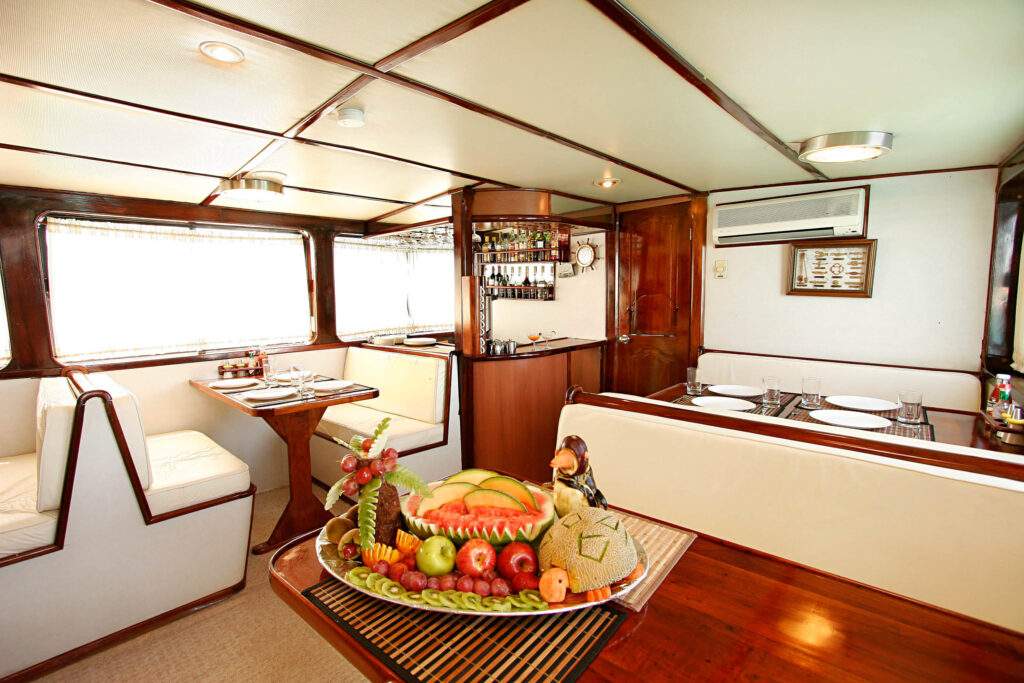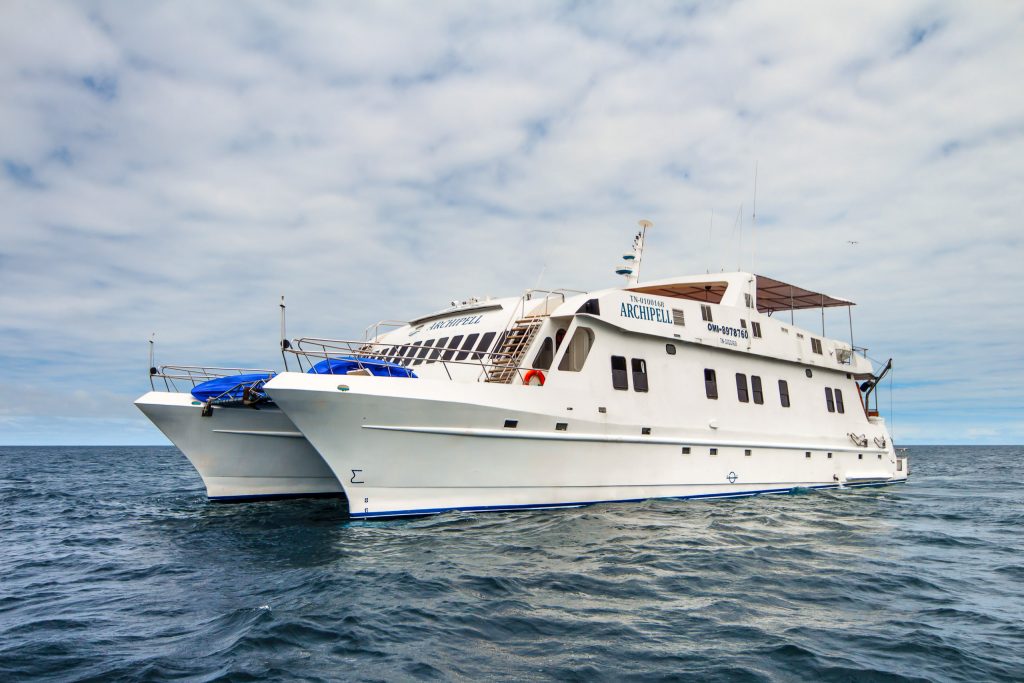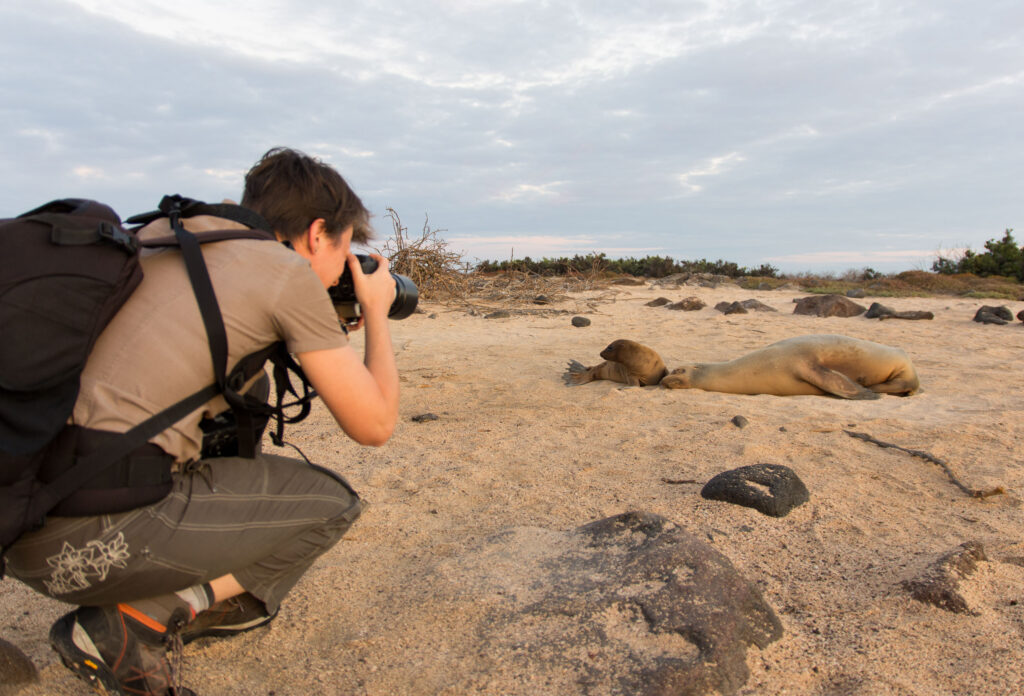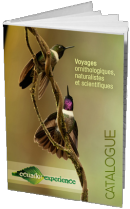We’re off to the Galapagos, kids! All right, but how does it work? How do you choose your trip to the Galapagos? It’s true that choosing an option for exploring the Galapagos is no easy task. There are many factors to consider.
- Do you have sea legs, or do you prefer the floor of the turtles (on land, of course)?
- Do you like solitude and isolation, or would you rather not miss out on the enchanted archipelago and discover the biological and geological diversity of these islands by all means?
- Will you break the piggy bank and make your childhood dream come true, or are you more of a low-cost traveler, ready to miss out on some of the major attractions of this natural paradise?
- Are you a contemplative observer or a convulsive collector?
- Do you have the time or not?
- Do you speak English, Spanish or just the language of Molière?
As you can see, this is no easy matter. So we’re going to take a closer look at all the options available, explain the main features of each and give you a few additional recommendations to help you decide how to travel to the Galapagos.
Galapagos cruise
The first option we’re going to look at is a cruise around the Galapagos archipelago. This is certainly the best-known option, as you’ll see, it offers an incredible experience. But what’s a cruise like?

What is a Galapagos cruise?
The principle of cruising is to live on the boat. In fact, with this option, the boat is the house, the kitchen and the car… well, the boat! It’s the fully-equipped exploration base that will take us to the various points of interest in the Galapagos archipelago.
How do you live on a cruise?
Life on a boat can be cramped… or not! In fact, it all depends on the category of boat you choose. Superior category boats have large, comfortable suites. Standard cabins, of course, are less so (some very narrow cabins can be fitted with bunk beds, with an equally narrow en-suite bathroom).

We also eat on the boat, as we said earlier: the boat is home. Don’t panic, a chef is part of the crew and will prepare delicious meals for you throughout your stay. Once again, the quality and variety of meals depend on the category of boat you choose.

How do you get around on a cruise?
Let’s turn now to the crucial point of cruising: getting around. And this is where cruising really comes into its own, because we’re cruising…. moussaillon! The Galapagos are an archipelago of islands, some of which are a hundred kilometers apart from the others, meaning several hours’ sailing. On a cruise, the longest journeys are made at night, which firstly allows you to save time on the days you want to fill, secondly to reach more distant islands and finally to be lulled at night by the rolling of the sea, or not… this is where, once again, the category of boat comes into play, but we’ll see about that below.

What can you see on a Galapagos cruise?
That’s the thousand-franc question on the subject of “How to travel to the Galapagos”! The great advantage of cruising is that you can access some very special islands, whose visits are reserved exclusively for this mode of transport. You’ll discover a very specific fauna and landscape, unique and inaccessible to island hopping, the second option explained below. Follow…. Please note that some islands are completely closed to all types of tourist visits, and are reserved for scientific research only. Special permits may be granted by the Galapagos National Park office for television or film shoots, or for scientific research projects. If this applies to you, please consult us, or visit our dedicated Fixing Experience page.
Some of the other islands are only accessible on scuba-diving cruises, notably Wolf and Darwin. These islands, the most remote and northerly of the Enchanted Archipelago, offer no land tours, only scuba diving. These sites are particularly renowned for their wealth of “big fish”, notably the whale shark. In fact, this is one of the world’s largest colonies of breeding adults. But we’ll deal with that in a special article dedicated to scuba diving.
For birdwatchers, it’s imperative that the cruise passes through Genovesa in search of its micro-endemic finch, the Genovesan Geospizo (Geospiza acutirostris), which is no longer a finch according to the new ornithological taxonomy, but that’s another story.
For volcano enthusiasts, a complete tour of Isabela, including a stopover in Fernandina, is a must if you’re hoping to spot a possible eruption of the Cumbre or Sierra Negra volcanoes. For photographers, some boats offer the opportunity to go out at times when the light is softer, as disembarkation at the visit sites is generally earlier than for island hopping. Here again, special authorizations are required, and we can help you apply for them from the Galapagos National Park if you have a large group and a particular visit in mind.
How long does a Galapagos Islands cruise last?
From a purely material point of view, a cruise can last between 4 and 15 days, or even longer if you combine itineraries.
From our point of view, cruises that are too “short” are less interesting, as the sites visited are generally accessible in day trips.
Longer cruises allow you to visit a large part of the archipelago, and for those who would like to see “everything”, it is possible to combine itineraries, for example combining an “8 days north” with an “8 days south”, which will allow you to make a complete tour of the archipelago, visiting, during 15 days, all the islands inaccessible by day trips. In this case, the limit of your dreams will be the budget you can allocate to your trip. In any case, 6- or 8-day cruises are the most classic and the most recommended.
What are the guides like on a cruise?
Are you a naturalist? Crazy about volcanoes? Ornithologist? There’s something for everyone in the Galapagos.
Certified guides in the Galapagos are differentiated by their experience and knowledge of nature and language. These latter characteristics generally correspond to years of practice, but also to the number of specific courses they attend to keep up to date with advances in scientific knowledge on all themes relating to the Galapagos (these are often courses given by the Charles Darwin Scientific Station or the Galapagos National Park). Most cruises are conducted with naturalist and generalist guides, and if you have a particular field of interest, some cruises on specific dates are conducted with a specialized guide (ornithologist, Dive Master, vulcanologist, etc.).
If you have a specific request, contact us and we’ll let you know which boats and dates are right for you.
What language is spoken on a cruise?
It’s worth noting that 82% of visitors to the Galapagos are of North American origin. All Galapagos National Park guides therefore speak at least Spanish (of course) and English. In general, cruises are offered in both languages. If you’re more of a “langue de Molière” type, some departures on specific dates are for French-speaking groups only. Or if you’d like to visit the Galápagos in Mandarin (the language, not the bird), that can also be arranged – we’ll just need a little time to find you the right guide. We can also arrange for a French-speaking translator (biologist, for example…) to accompany the group from the mainland, with a supplement applied according to the number of participants.
Contact us for details of these services, as well as departure dates for French-speaking cruises or any other language.
What are the disadvantages of cruising?
So what’s the downside? Well, there always is one….
A cruise ship, as we said above, is like a house/car: it needs water, fuel, a captain, a cook, a dinghy to disembark, or even two, with the drivers that go with it, a full-time guide, etc., and all these logistics… it’s a bit expensive. But it’s well worth it!

In short, cruising the Galapagos is…
So, what’s it like to travel to the Galapagos… on a cruise?
In short, cruising is the best way to explore the Galapagos’ biodiversity in depth.
Discover the Galapagos cruises we’ve selected for you.
Island hopping in the Galapagos Islands
So, what is island hopping? Here’s a term that’s very specific to Galapagos holidays and that you don’t often hear… so we’ll explain it for you.
Originally, “cabotage” meant “to sail close to the coast”. Our British friends call it island hopping… and hop!
What is island hopping in the Galapagos?
Applied to the Galapagos archipelago, it means visiting the archipelago from a land base on one of the main islands, and during the day visiting, visiting….
For example, from Santa Cruz, the most inhabited island, you can visit Plaza Sud, Seymour Nord, Santa Fé, Pinzon, Bartolomé, etc., uninhabited islands that are home to a surprising variety of wildlife.

What’s a typical day like on a island hopping trip to the Galapagos?
Generally speaking, the day trip starts at around 7am. After one to three hours’ sailing, we disembark on an island to visit it, accompanied by a guide from the national park who explains everything about the island, its fauna, flora, geological history and so on. Lunch is served on the boat, and an aquatic session is generally included in the outing, a good opportunity to see the incredible marine and underwater fauna of the Galapagos. We usually return to our departure point in the mid to late afternoon.
Here’s a typical day on a day trip.

What can you see on a island hopping trip to the Galapagos?
The advantages of cabotage are manifold. Firstly, you are free to choose the excursions you wish to make, provided they are accessible from the island on which you are staying and there is space at the time of your trip. Remember that many islands are only accessible by long-distance cruises. Of course, you’ll have the option of visiting certain islands on your own. Tortuga Bay, La Loberia and Concha y Perla are all open-access sites that can occupy the rest of your day, or even a full day. Note that as of August 2021, an entrance fee is now charged to visit certain sites such as Las Grietas, to cover the services of a mandatory local guide. And for those who don’t have sea legs, it’s a good option to calm the pitching and rolling of the boat.

Where do you sleep on a island hopping ?
Would you prefer a comfortable place to rest between two outings, or as close as possible to the pontoon or the town center, for maximum access to the sites?
The choice of hotels in the Galapagos is vast, and it all depends on what you prefer. Parameters such as comfort, proximity to sites and sea views have a major influence on hotel rates, and to help you make the most of your trip, we put our expertise and knowledge of the sites at your disposal to advise you as accurately as possible.
Superior category hotels are generally those with the most pleasant views, often overlooking the sea, but not always as close to it as you might imagine. Several room categories exist within the same accommodation, so it’s very important to ask about the specifics. Rates can vary from simple to double. It’s up to you to let us know your preferences, and we’ll select several options to suit your wishes and budget.
What are the guides like on a day trip?
The guides on our day trips are Galapagos National Park naturalist guides. They all speak Spanish and English, but it’s rare to find a guide who specializes in a particular field of study or language. They tend to have less experience and knowledge than the guides who work on the longer cruises.

What language is spoken on a island hopping trip?
The official language of the Galapagos is Spanish, English is also widely spoken and, depending on who you meet on the streets of Puerto Ayora or Puerto Villamil, you may meet travellers from all over the world. This is a great opportunity to use your polyglot vocabulary to tell other travellers about your encounters with the local wildlife.
By the way, a mandarin in Mandarin is 柑桔…
What are the disadvantages of island hopping travel?
At the end of the day, cabotage also has its advantages, so what could possibly put us off this type of trip?
One of the disadvantages of this system of touring is directly linked to travel to the daily sightseeing sites and between the inhabited islands. It generally takes longer to get to and from the tour sites than the time allotted to the tour itself. The “fibras rapidas”, the cab boats that take you between the 4 inhabited islands of the Galapagos archipelago, are generally quite uncomfortable and, depending on the season, the swell can even make the crossing slightly perilous. But it’s the more remote islands and sites, inaccessible on a day trip, that will be missing from your list of great adventurers, especially if they are of particular interest to you or your tribe: the volcanoes of northern Isabela, the wingless cormorants of Fernandina, the whale sharks of Darwin and Wolf or the micro-endemic geospizas of Genovesa. All of which could point you in the direction of… a cruise!

In short, island hopping in the Galapagos is…
Cabotage in the Galapagos means freedom, the chance to “feel” life on the archipelago made famous by Darwin, to imagine yourself following in Darwin’s footsteps, at the pace you want and like.
Find out more about Ecuador Experience’s specially-designed Galapagos island hopping.
Let’s recap
Let’s have a quick recap of the advantages and disadvantages of each option, so we know exactly how to travel to the Galapagos:
The advantages of cruising:
- Access to remote islands,
- More in-depth discovery of the Galápagos, including specific species,
- Travel time often at night, so more time for excursions.
- An “all-inclusive” formula
Disadvantages of the cruise :
- A more expensive option, due to the logistics involved,
- Very strict timetables, no time for extra outings
- You’re constantly at sea, which can make your stay uncomfortable for some, depending on the season.
The advantages of island hopping :
- More flexible organization
- More economical overall
- More freedom to organize your days.
Disadvantages of island hopping:
- Access limited to certain islands only.
- Travel time to visit sites, which take up a lot of time during the day.
- Travel between inhabited islands can be quite chaotic with cab boats.
Here’s all the information you need to plan your trip to the Galapagos…. Ah, but no! Wait a minute! At Ecuador Experience there’s another formula we like… it’s the mix of the two!

Cruising in addition to island hopping? or island hopping in addition to cruising…
Yes, it’s possible: a short 5- or 6-day cruise that lets you focus on one thing you absolutely want to see, and an island hopping to make the pleasure last without breaking the bank.
Now that’s a great way to treat yourself, and we’ve got plenty of tips to help you make the most of it, so get in touch with us to organize your stay in the Galápagos.
By Pierre Ferron, your Galapagos cruise or island hopping advisor


